* (restored)
—-

Dear Dennis, as you know I’ve been working for a long time on an exhibition here in San Francisco that will bring back Kiki Gallery for six weeks this summer at Ratio 3, deep in the Mission District and oddly enough right around the corner from the original Kiki. The young artist Colter Jacobsen has been my co-curator for this show, and we have been well advised by Ratio 3’s director Chris Perez, who gave us the green light a year ago and who has been patient, helpful and generous for months. Our show is called “Kiki: The Proof is in the Pudding,” and it opened June 27, to run through August 2, and seeing that you can’t be here, I’m sending you some bits and pieces of it through e-mail for your wonderful blog. Most of your readers will have never heard of Kiki, nor of its founder, the late Rick Jacobsen (1961-1997), so I thought to introduce the show by way of a memoir — unpublished and unfinished — which I’ve been writing for some years. The show includes nearly two dozen artists who showed at Kiki and we have scrounged the world for the original artworks that once hung on its walls. Even though the gallery lasted for only 18 months, it turned into something of a legend, perhaps because so many of the artists involved went on to fame elsewhere. And also just because it was so amateur and contingent and makeshift I guess, in that respect very representative of the funk-junk aesthetic often associated with California art. Thanks, Dennis, for giving me and Colter permission to use the essay on Yoko Ono which you wrote for Kiki’s final show, “This Is Not Her,” organized by Rick Jacobsen and Wayne Smith, and of course for opening your blog to me and to Kiki today. If any of your readers will be here in San Francisco this summer I hope they can come down to Ratio 3 and take a look. Love from, Kevin K.
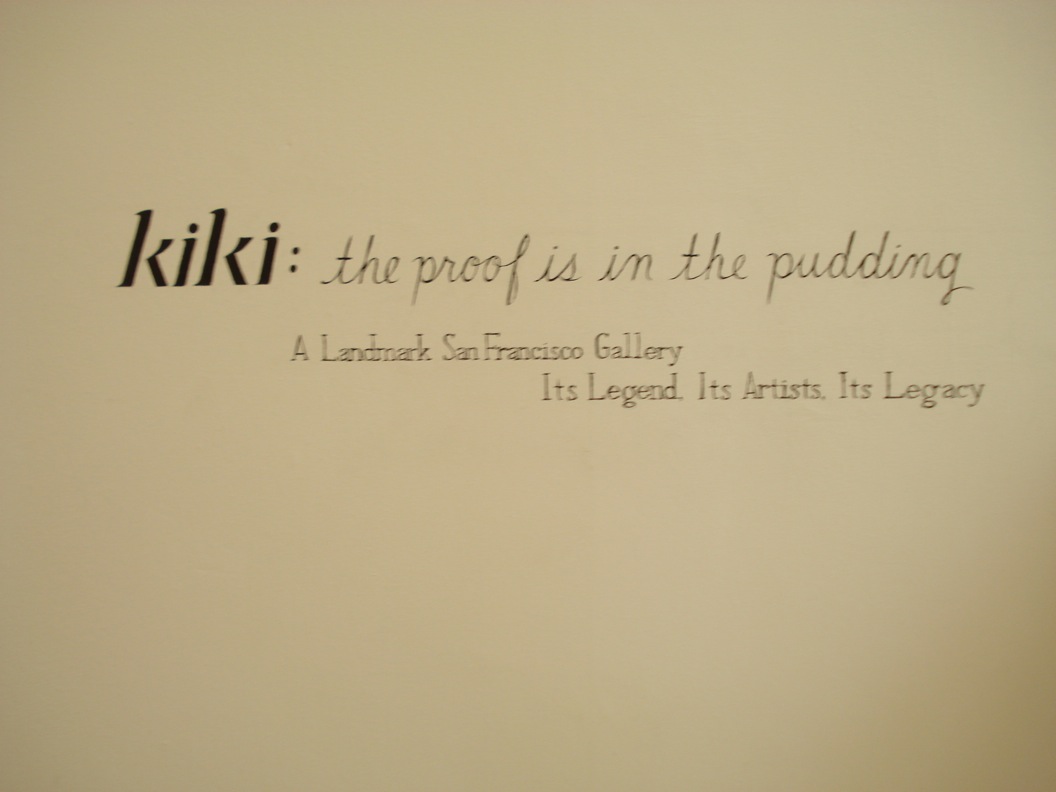
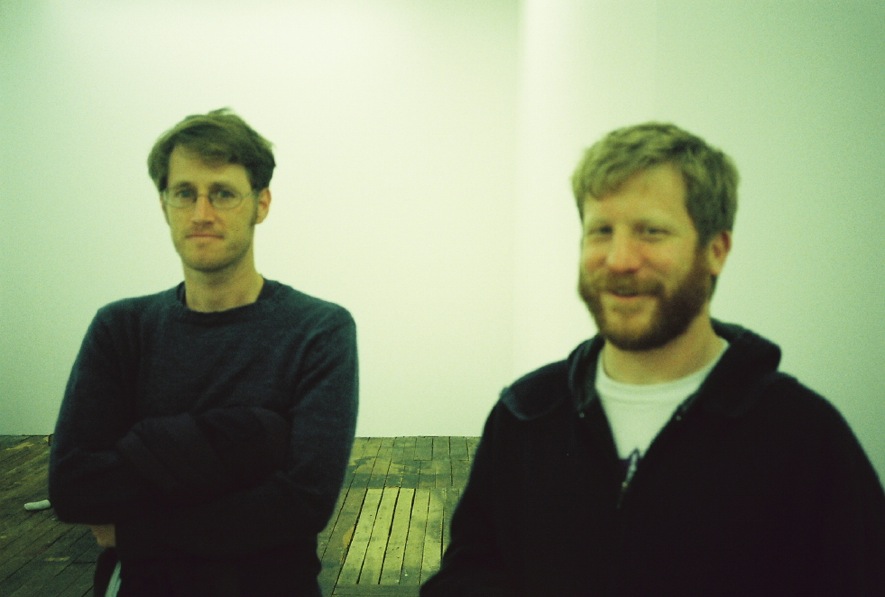
Colter Jacobsen (my co curator) and Scott Hewicker, artist
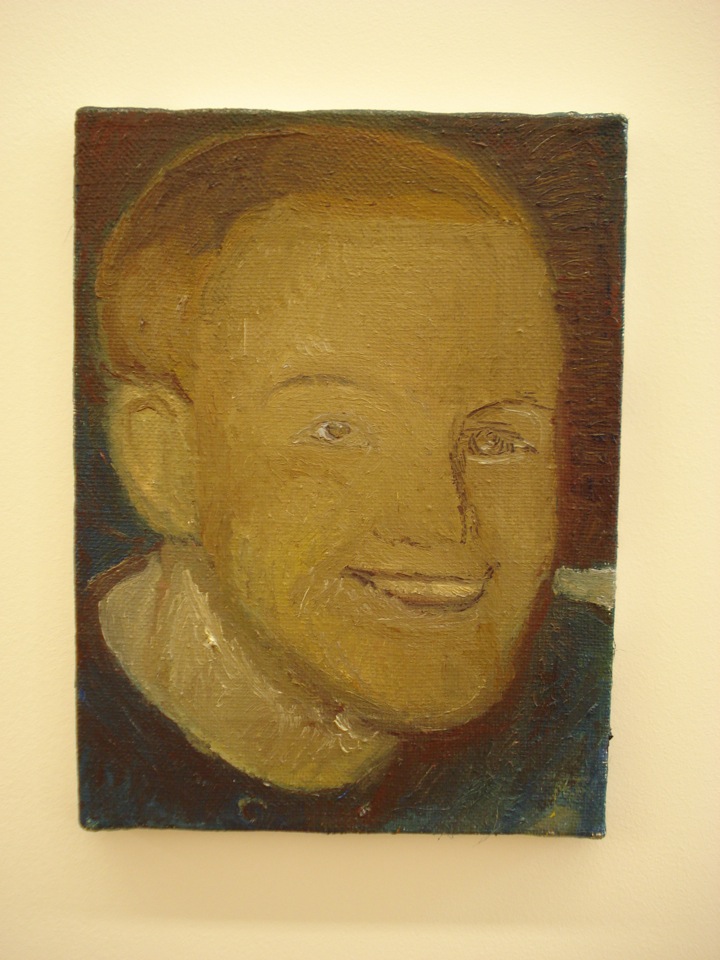
That afternoon in 1993, when I left John Ryan’s apartment on 14th Street, my head was spinning. In the 1950s, John Allen Ryan had been cute in a supercharged, street boy sort of way, kind of a Pete Wentz look I guess—it was all years before I was introduced to him, but I knew he had been Jack Spicer’s student at the Art Institute here in San Francisco, had slept with him (or something), become his confidant, had the sex Spicer was afraid of, and eventually became one of the “6” in the “6” Gallery, the legendary artist-run space Spicer founded with five former students in 1954. When I was writing the life of Spicer (with Lew Ellingham) Ryan was one of my key witnesses—a living link to Jack Spicer’s most vital period—and one who knew him in many different contexts, as a teacher, a “boyfriend,” a fellow poet, an artist, a collaborator. Yet each of my visits to John Allen Ryan, who lived only 3 or 4 blocks away from me, left me walking home with a headache, in part because he was dying, in part because of the difficulty of his character. And yet even the defects in his character—as I saw them—seemed inextricably tied to his dying. If I had known him at some earlier time would I have seen the same sunny, angelic, sexy man so many had told me about? Now Ryan had AIDS and he was experimenting with his meds, and he used his diagnosis as a release from the 12 step programs his friends and family might have preferred to see him on. Plus drunk, he felt comfortable enough to share with me his memories of lusting after children, and I wasn’t comfortable with that myself, yet I felt constrained around him, like I had to pretend not to be revolted. He had basically stopped writing poetry and started writing—I was going to say “child porn,” but it wasn’t quite that—at some hazy time long before we had met. Handwritten stories about adorable boys of 7 or 8. When you visited his apartment piles of ancient piles of newspapers climbed the corners of his rooms, stacked up against his walls, maybe chest-high. It wasn’t exactly dangerous, but it did make one want never to save another newspaper oneself. And laid in among these crumpled papers were original drawings by Jess, handwritten poems by Spicer, unique photos of Kerouac—all these artists and writers he had known in his youth (he had been the boyfriend of Ginsberg as well). In effect, he was out of control, and I began wondering if anything he told me could be trusted, for his mind wandered from here to there and back at the drop of a hat. I liked him, but I didn’t like him wanting me to match him drink for drink, and I didn’t like myself leading him on, as it were, for the sake of his memories of a man who had died back in 1965.
—-To clear my head I padded a few doors up towards Guerrero to the storefront where Rick Jacobsen was putting up his new gallery. The door was open, so I poked my head inside. “Hello!” I hollered.
—-Maybe when I look back on my life and youngsters asked me what I did with it, I’ll be able to nod sagely and say that I was in on three very different movements that happened here in San Francisco. I was part of the Poets Theater, I was one of the original “New Narrative” writers in the 1980s and then, in the 1990s, I hung out at Kiki—the short-lived art gallery that ran for only eighteen months maybe. Of course there’s plenty of time left for me to add a fourth or even fifth thing to my resume but as of now (2008) those are basically what I’ll remember as my most intense intersections with art. “Hello?” I called out, through the open door. The room in which my voice echoed around was small, more of a lobby than an actual room, and I assumed that this would be the anteroom and the new planned gallery would begin deeper away from the frontage. Then Rick’s head appeared from the hallway. “Hello, my friend,” he said. “This is it. This is going to be Kiki.”
—-We’ve all heard the tall tales about AIDS, how when people came down with the virus and felt that they faced imminent death, they turned themselves into urban legends of capitalism and its discontents. We’ve heard the stories about gay men scoring zillions of American Express cards and maxxing them out in final shopping sprees. Rick Jacobsen considered it, but instead he quit his job to do something in his last days, something he really loved. In this case, he would open a gallery and run it exactly as he pleased. I’ve got some photos of Rick Jacobsen, and the Kiki archives, housed close by my apartment at Special Collections at the main San Francisco library at Civic Center, have plenty more, so I should be able to conjure him up for you physically, for he was awfully vivid. If this were a movie, Rick would play the part of the sidekick, the Kato type, the Ron Weasley. Or he might be Jimmy Olsen in the Superman comics, strawberry blonde hair cropped short, bright blue eyes, cyan really, as though peeled from a 40s comic strip. He was quick to grin, to see the silly side of life, so sometimes he seemed goofier than he was, or than he felt perhaps. Later, after Rick’s death, when I got into Buffy the Vampire Slayer, I saw something of Rick in Xander Harris, his wisecracks, his longing for hope, his wry grin, go-for-broke stance. Inside Kiki the walls were generally white, and there was so little wall space that Rick kept the same gallon of paint for several shows, re-painting after each one was taken down. You could do the whole place in about fifteen minutes, unless you were high, which cramped your speed but made it more fun in a certain sense. Occasionally there would be a show which demanded chocolate walls, or green walls—Cathie Opie’s show was hung on walls the burnt color of terra cotta flower pots. His first show, Rick said, was going to be all about shit. It was going to be called “Caca at Kiki.” And the “at” would be replaced by a circa sign, like an e-mail address. There was something of the provocateur about Rick, that’s a given. Like the UK impresario Malcolm McLaren, he had a paradoxical combination of nervous energy and a still core of Buddhist calm. Indeed McLaren had been one of Rick’s inspirations. McLaren called the shop that he and Vivienne Westwood opened, in London’s Kings Road, “Let It Rock,” and linked it to an international Situationalist movement in which a cat might look at a king, the littlest person might try something, and social change would result. I don’t know if Rick knew his Paris 1968 as well as Greil Marcus, but he was instinctively drawn to artists on the outer edge of expression, and of course he was thoroughly informed by ACT UP politics and the courageous, sometimes vulgar ethos of the movement.

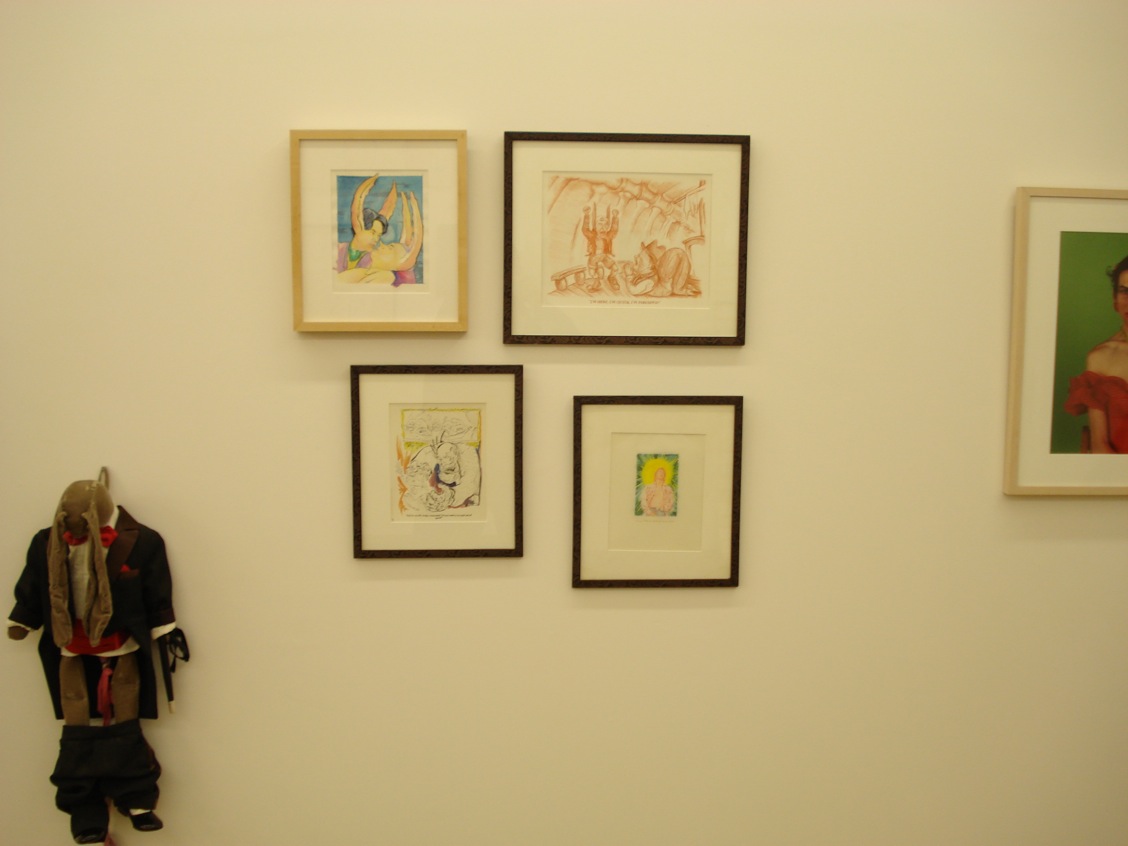
(1993) by Keith Mayerson
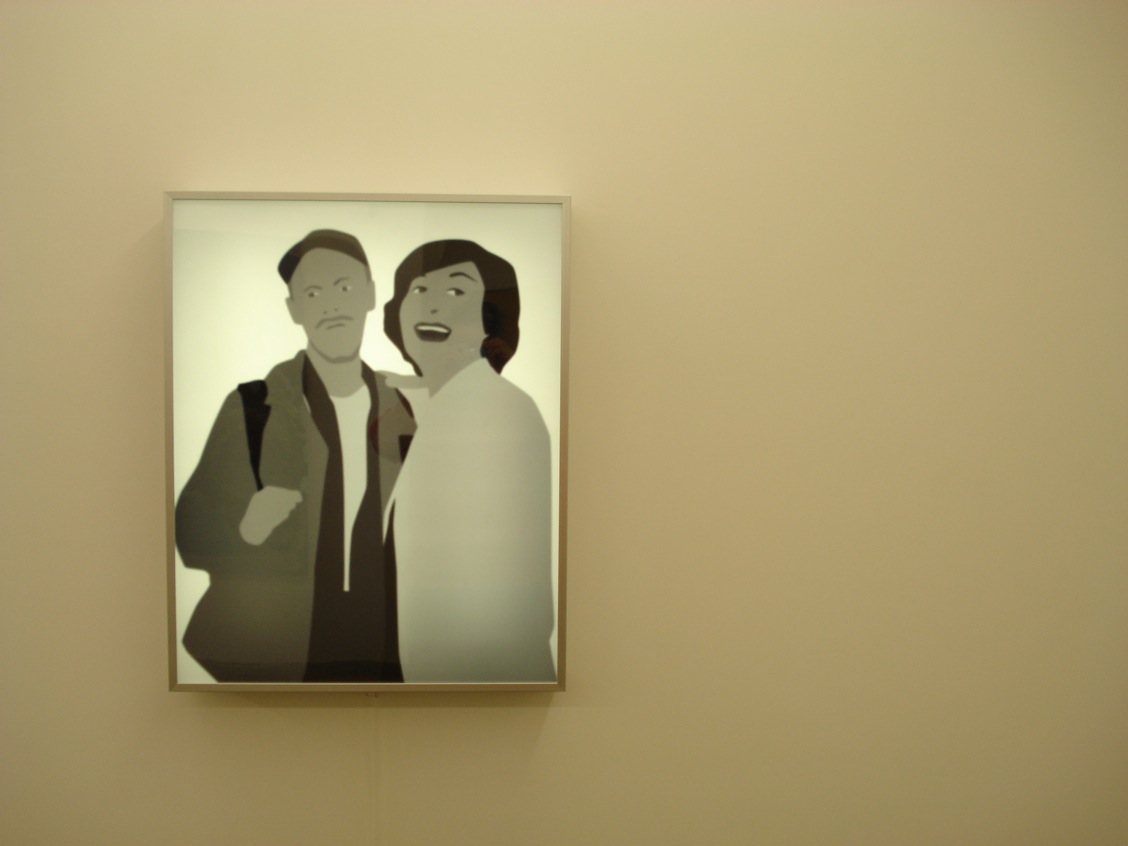
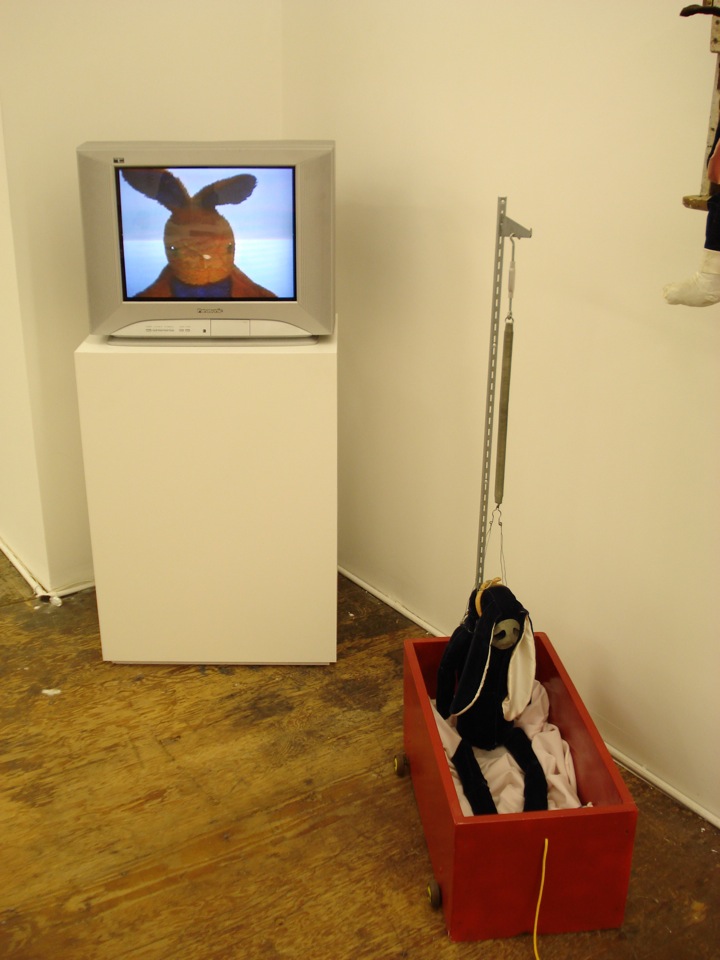

—-Indeed he came to art, or to dealing, through his activism, through his work raising money for ACT UP San Francisco. New York had had those fabled art auctions which would raise one million dollars in a single evening at Paula Cooper Gallery, beginning in 1989, and in San Francisco Rick would produce smaller versions of these benefits. I remember going to one at Rex Ray’s studio when it used to be on 11th Street in the nightclub district, above the DNA Lounge, and seeing Rick there, posing in front of some little Ross Bleckner etching that the glamorous New York-based painter, then the veritable king of gay art, had donated to the cause. Rick was all beaming and Bleckner’s mysterious, biomorphic blobs loomed like underwater creatures—like T cells, Rick said. I don’t know how much money the auction made, but Rick had found his métier.
—-When I first knew him, he dressed with casual rigor in ACT UP fashions, a precise range of styles now somewhat difficult to reconstruct. Doc Martens, white T-shirts with Helvetica logos, what we might now call cargo shorts except somewhat briefer, but with plenty of pockets, bandannas, red suspenders, overalls. Dodie points out, even if they paid a lot for the clothes they looked like ordinary clothes. Fashion was so extravagant in 1990 that the ACT UP look, as we called it, seemed stripped down, minimalist, egalitarian. The Reagan-Bush years were all about Marie Antoinette-like spectacles of excess—the Miami Vice construction of whiteness, the Christian LaCroix pouffe. Was the look of ACT UP perhaps a worker’s look? A fighter’s look. It owed something to skinhead fashion, stripped down bare bones of clothes, with nothing extraneous for the cops to hold onto you with, and heavy shoes for kicking back. And it was made for mass reception. As Douglas Crimp said, “The fact that everybody would be wearing identical shirts made ACT UP look incredibly well organized.” Thus when the designer of the poster for our current show used as the poster image an old photo of Rick posing in front of Kiki, she sent it my way for approval, and I wrinkled my brow, thinking it didn’t look right: it was because she had whitened out Rick’s waistline, and got rid of the waistband of his underwear that poked out from top of his baggy jeans, and I insisted she put those jockey shorts back because that was the style, that was the key—you can see I got fairly imaginative, with the trifles and trinkets that are all that are left to me.
—-And Kiki’s inaugural show was going to be about shit not just to outrage but because, Rick said, the AIDS crisis had made a whole generation of gay men and their friends all too familiar with what was formerly a taboo substance, but now we all watched, “read” really, our own shit the way an earlier generation of soothsayers had divined the future from bones shaken out of a cup, or the lines in one’s palm. It was in the zeitgeist: the provinces of our body, as Auden wrote, had revolted. Rick and I stood on the curb and surveyed his gallery. A large square window on the street let in spring sunlight, but it was barred with a Byzantine cluster of molded iron rods, so the sun cast strange shadows on the painted wooden floor. From the curb you could barely see in, but if you squinted you could make out the room’s essential features. Underneath the window, close to the weeds that sprouted between sidewalk panels of concrete, was the distinctive and lovely touch of a Delft blue ornamental tile in checkerboard squares.
—-Step inside the door, there was the little room that was, comically, the main room of the gallery. A loft platform was built into a corner of the room, and a wooden ladder nailed into the wall to access it—an ungainly feature that precluded hanging anything large on either of the walls that abutted it, but one that Rick made the best possible use of in other aspects: why, he had rented out this loft bed for someone to sleep there, which brought in some added monthly income, and also I imagine cut down on security costs.
—-“You know Mark Ewert,” Rick said. “Why, you introduced me to him. He’s my star boarder!” Mark had abandoned a stormy relationship with LA-based poet and novelist Dennis Cooper — you, Dennis! — , and we had introduced him to many of the denizens of the local art world in San Francisco. The young ones especially, for Mark who had spent many of his teenage years trolling for older men like Ginsberg and Burroughs, had now decided to turn over a new leaf and try out guys his own age. Mark and I were writing novel together — Secret Garden, the classic Frances Hodgson Burnett story brought up to date with surf culture, AIDS activism, and some seriously kinky sex play — and it was nice to have him nearby.
—-“I’m sure he’ll have fun,” I hazarded, though it would not do for me, I was forty, far too old to climb a pirate style ladder of planks to reach my bed, or to clear out whenever there was activity in the gallery below, as Rick required of Mark—scat, like a cat, into the streets.
—-“We’ll run all kinds of events here,” Rick said. “I want lectures and readings and talks and films and bands. I want you to put on your plays here, Kevin. I sort of want it to be everyone’s clubhouse, a place to draw people in and then hit them over the head with what’s new. What’s new, pussycat? Remember that film, my friend, with Peter Sellers? Peter O’Toole? Crazy!” The rooms of the gallery were so small that if a reading were held, and eight people showed, it would seem like an enormous crowd. We were to stage plays for Rick, who would heroically jam three rows of six folding chairs into the space underneath the loft bed, then seat three or four people up in the bed, and our stage would be among the feet of the people in the front row, and our backs would be brushing the curtained window onto 14th street. Players would make their exits and entrances from the one door, the front door of the gallery; I remember seeing them crouching listening for dear life at the keyhole, desperate to hear the cues within over the vibrant Mission street life outside. And often they missed their cues and the stage manager would have to run over and open the door himself and summon whoever it was to come inside and start speaking immediately. The first play I did there was “Life after Prince,” set in an unemployment office slash courtroom in which a presiding judge (Wayne Smith) heard evidence from all the protégés Prince had signed up, made a few quasi-hit singles for, then dropped. One by one they crowded the courtroom — Wendy and Lisa, Apollonia, Kim Basinger, Vanity, Sinead O’Connor and Sheena Easton. Nayland played Vanity and Apollonia, changing his character by flipping over a sandwich board on his chest. I was the clerk, trying to calm down the apoplectic judge. And Stephanie Cannizzo, Larry Rinder’s secretary at the Matrix Program at UC Berkeley’s Art Museum, played herself, Prince’s biggest fan and the chief witness in his defense.
STEPHANIE CANNIZZO. Ladies and gentlemen, I’m still afraid you might have gotten a wrong impression about Prince—I mean, Victor. He’s really special. When you listen to one of his songs, you’ll know. He’s no clown, he’s one of the top creators of all time. He was born under a magic star, under a dark sky, and the whole world trembled that night, and ever since his first record, I’ve been telling everyone I know, how great he is. Maybe he’s mistreated these women, I don’t know, but everyone makes mistakes. He’s sensitive and proud—I admire that. I like everything about him—almost. Give him another chance, I know you’ll say, he’s really great. Thank you and—good night.
—-I went back to John Ryan’s apartment a few doors down, possessed by an enormous idea. Really I should have been an event planner. John Ryan had been one of the founders of the 6 Gallery — the alternative San Francisco art space — wouldn’t it be cool if he came by, met Rick, and I don’t know, made some gesture of passing on the torch as it were? Acknowledging, you are doing what we did back then, you are doing the thing that I’ve been living on all these decades past? John seemed interested for a few minutes, then started to fret about something; soon his attention was entirely elsewhere. He had translated the entire Lord of the Rings saga into Elvish, and had recited it into a series of footwide tapes big as dinner plates. Impressive, and a true labor of love, but boring after a few minutes of close listening. I’d sit there, growing skeptical, wondering how would you know if this was real Elvish or him just uttering any old glottal, lip smacking syllables with musical intonations? He and Jack Spicer taught each other Martian, and when I asked him to favor me with some Martian, he gave me Spicer’s lines, from his Imaginary Elegies, about the flirty boy in the Berkeley gay bar,
When I praise the sun or any bronze god derived from it
Don’t think I wouldn’t rather praise the very tall blond boy
Who ate all of my potato-chips at the Red Lizard.
It’s just that I won’t see him when I open my eyes
And I will see the sun.
Things like the sun are always there when the eyes are open
Insistent as breath.
But in Martian the verse sounded suspiciously Elfin, and when he drank it just went on and on until even his cats got bored and left us for the kitchen. “Ae ú-esteliach nad, estelio han, estelio ammen.” “So beautiful,” I murmured. “Now what do you say we go to Kiki and I’ll show you what Rick is doing with the space.”
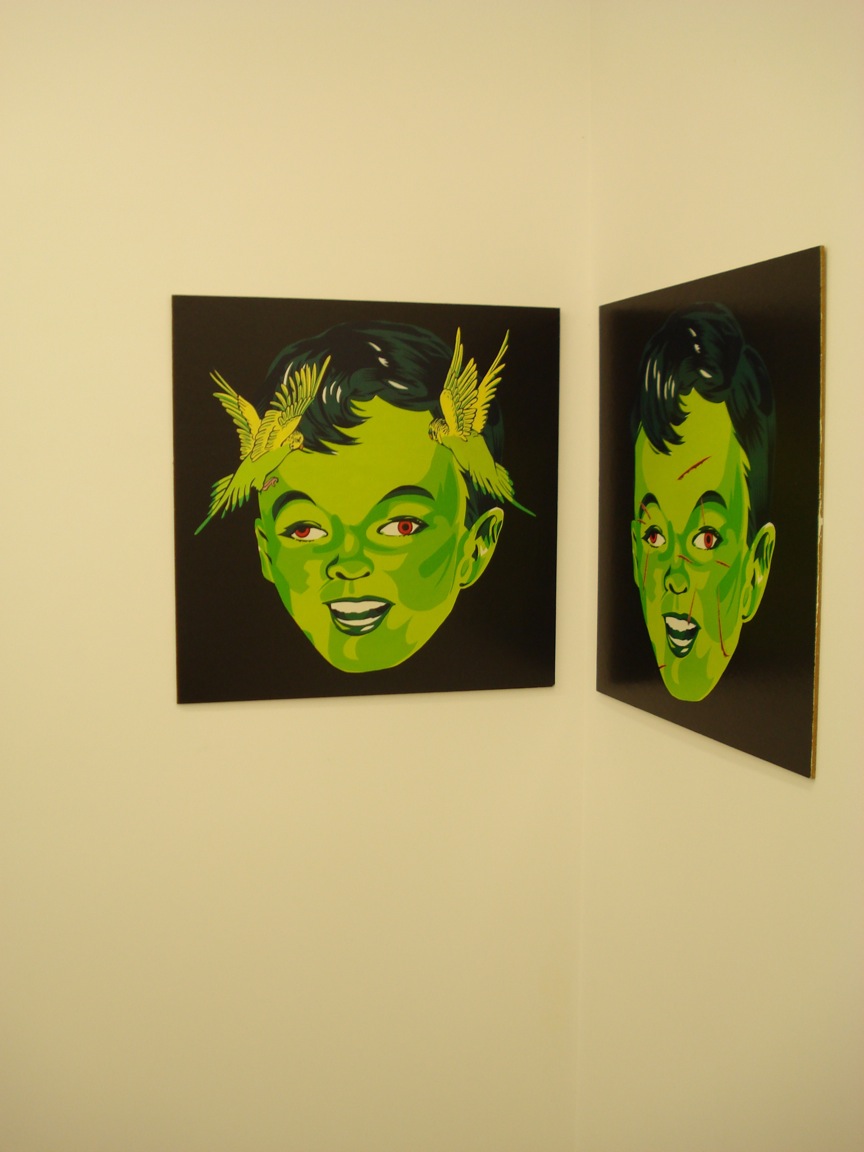
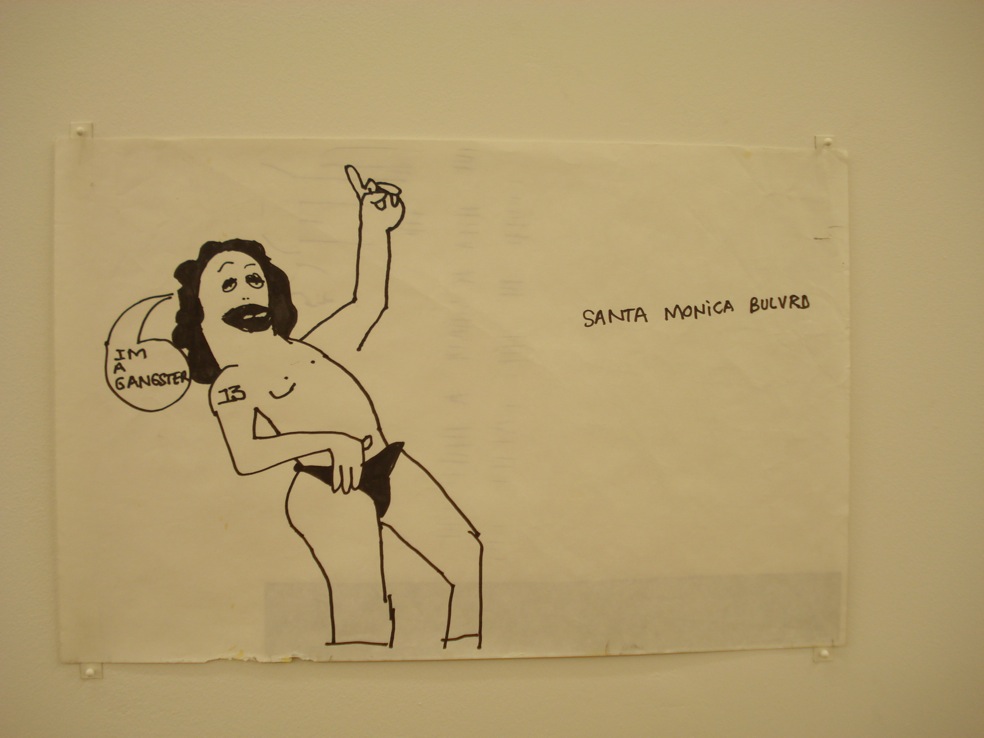
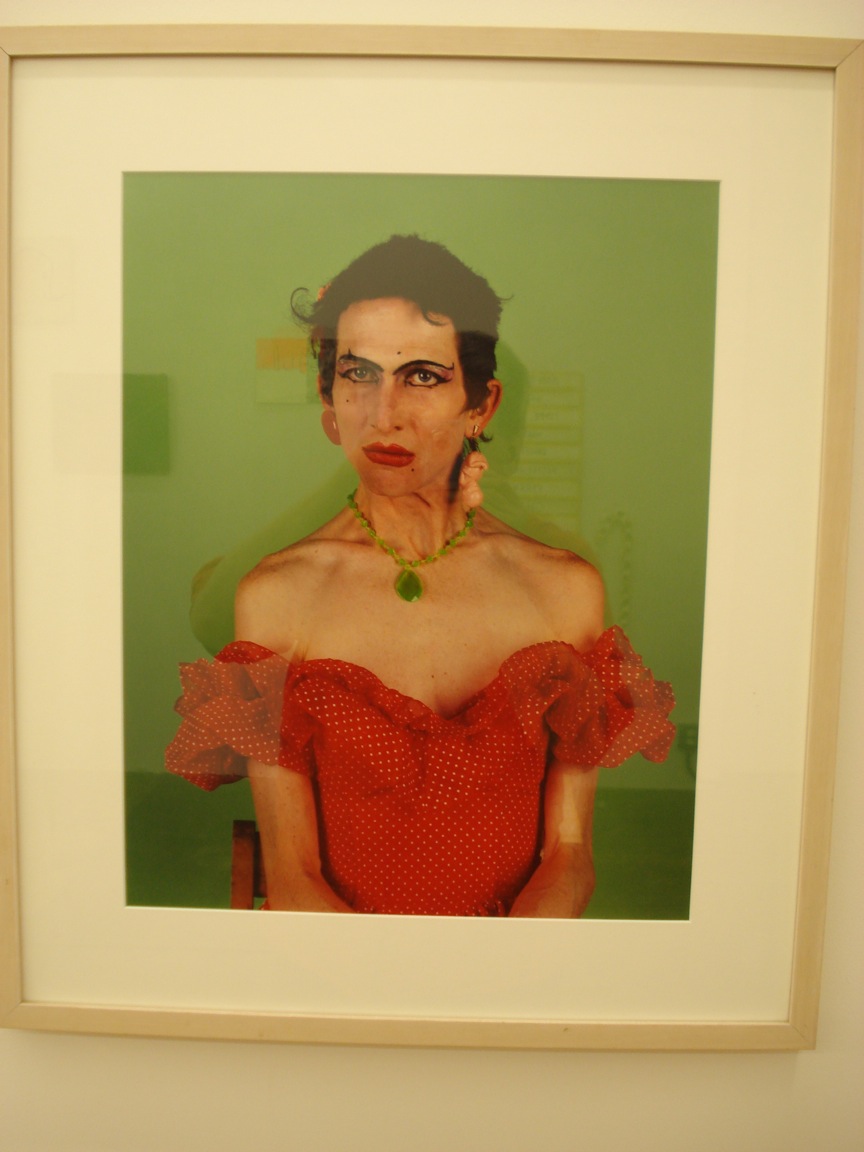
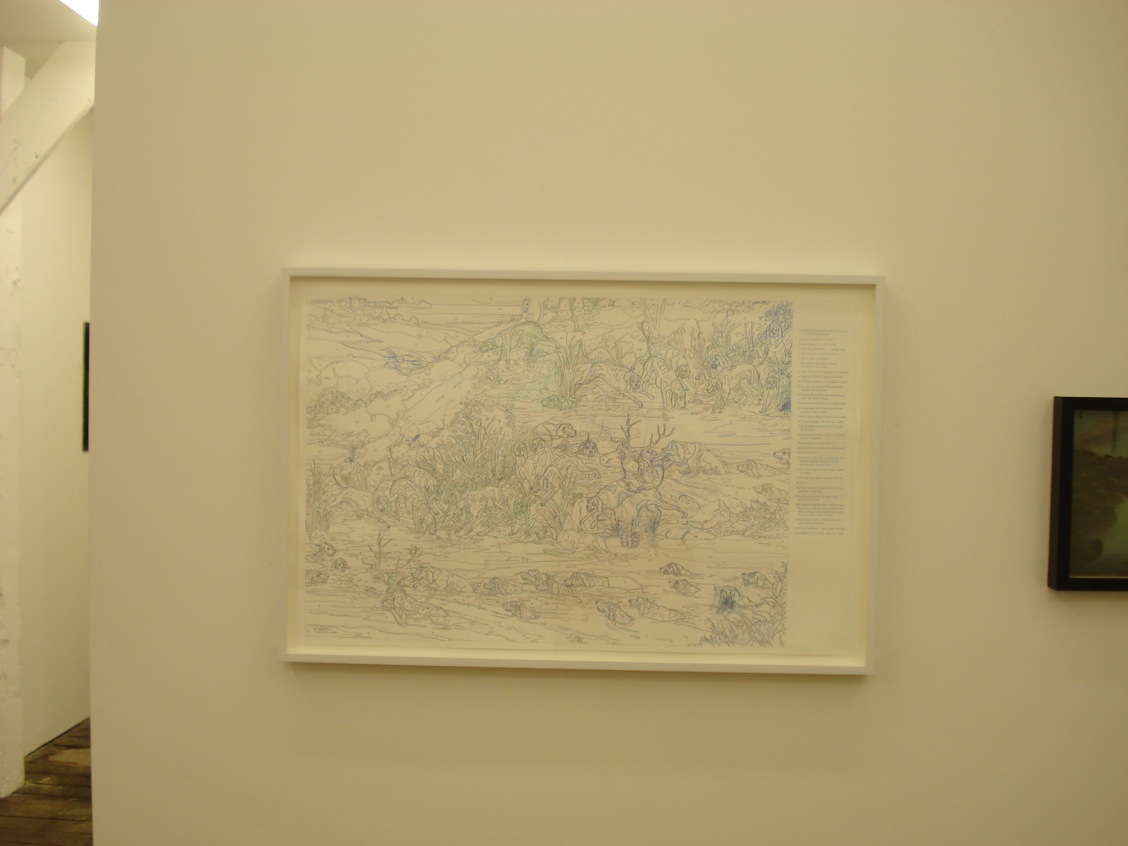
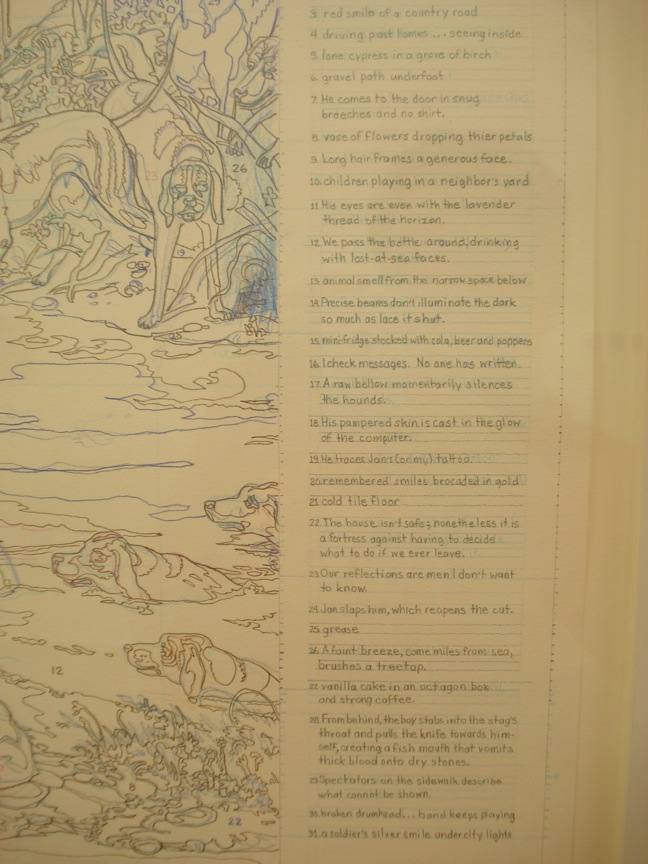
I mustn’t forget to tell you about Red Dora’s Bearded Lady, the café that lay adjacent to Kiki so that their doors opened into each other. Founded by the artists Harriet (now Harry) Dodge, and Silas “Flipper” Howard from the band Tribe 8, Red Dora’s was a women’s tearoom and “truckstop” as Dodge used to say, with a minimal menu but the epicenter of Mission lesbian life in those days. The café and the gallery shared a common garden patio in the back, usually filled with dogs, nearby the bathroom. Coming out into the sunny backyard after penetrating the incredibly narrow, dim hallway of either Kiki or Red Dora’s one found it perhaps more charming than it actually was. The cartoonist and writer Kris Kovick ran a monthly reading series there, a lot of spoken word, slam poetry, much of it comic in nature, always a vibrant mix of writing and theater. Jenni Olson, the San Francisco filmmaker and activist, laughed when she remembered what an unlikely place it was—14th Street, seedy as all get out—and then you had Red Dora’s and Kiki bunched together like defiant outposts of the avant-garde. “I remember the opening of Cathie Opie’s show at Kiki,” she recalled, “with that giant, life-sized picture of Justin Bond, and the smaller photos of LA trannies like ‘Chicken’ and ‘Steak,’ with Opie’s trademark rich colors and backdrops, and I remember thinking how thrilling it was that finally, for lesbians, we were finally chic—not just tolerated or excused, but everyone wanted to be us! It was transitory, that high, but you can’t imagine how that felt.”
—-I remember seeing Justin Bond, of the cult stage duo “Kiki and Herb,” walking everywhere in San Francisco, often down 18th Street from the Castro to the Mission, his long blond hair sometimes tied primly behind him, other times, like Melina Mercouri, he let the hair blow about his face as though to suggest passionate fires banked within. His extraordinary looks stopped traffic in the street. Cars would jam on their brakes. Opie photographed him looking stunning and androgynous in violet, his eyes boring holes through the viewer, holes of ravaged glamour remarkable in one who, viewed from another angle, was so young and fresh.
—-“Which came first,” I asked him recently, “did you become Kiki or did Rick call his space Kiki first?”
—-“I’ve often thought about that,” he replied. “You know I was at the opening. You’d think I would recall.” Justin had come across the term “Ki-Ki,” in Leslie Feinberg’s memoir-novel Stone Butch Blues (1993), a lesbian category for one who presents herself as neither butch nor femme. “But it’s pronounced “Ky-Ky,” to rhyme with ‘My, My.’ I liked that; I felt like that, that I wasn’t butch nor was I femme. And there was Kiki of Montparnasse, the artists’ favorite model and rather a disgrace in 1920s Paris. I always teased Rick for copying me, but to tell you the truth, it might have been the other way around—though I don’t think so!”
—-In the summer of 1993 Kiki opened, and it was a mess—but an inspired one, with the sorts of work on the walls that had you rubbing your eyes, “Is this art?” People came in droves, maybe the inner core of hipsters at first, but then intrepid collectors and then, drawn by the buzz like bees at a hive, came the ordinary people I guess, those who didn’t know much about art but knew when something was fun. Some got converted, some became artists themselves. The very messiness of Rick’s presentation and the tiny size of the space sometimes made you feel you were in an old fashioned phone booth with graffiti edged into it from top to bottom. Rick’s shows were really out there; after the “Caca” one, there was a “Carcass” show, truly gross, in which all the art works had been made from dead animals. There was a Bong show of artist’s bongs—the only rule was, they all had to actually be workable. At that show, the artists brought the work in so late there was no time to label anything, and everyone was so high that no one could remember who had done which piece. I don’t remember how Rick sorted it all out, or if he cared to. There were a number of one or two person shows: Catherine Opie showed with Jerome Caja, the San Francisco drag activist who did many of his/her paintings using store bought makeup—nail polish, liquid eyeliner, glitter—on canvases retrieved from dumpsters. Jerome greeted his fans from a claw-footed bathtub; it was a gesture out of an earlier age, the 1920s, the era of Baroness Elsa von Freytag-Loringhoven. Presumably the Baroness would not have signed my autograph book, as Jerome, did, “Hi Kevin, Fuck You.” Dozens of Jerome’s little pictures dotted the walls, and more were piled in the shed in case any were bought. Soon as one was snapped up, Rick slapped up another. They came on any flat surface Jerome could find—not only canvas but hubcaps, ashtrays, pizza boxes, shingles. D-L Alvarez had a show, “Night of the Hunter,” that doubled up with Chris Johanson’s “Fantasy Island.” The public library, where Wayne donated many of the Kiki materials after Rick’s death, has a whole slew of little Johanson drawings, at least a dozen, all more or less the same, one stab after another for an image for the “Fantasy Island” invitation, all of them variations on his signature image of an anonymous schlub lying (dead? passed out? asleep) on a cruel city street.
—-It was an age of aggression, of survival—an agonistic age—with a premium on raw, unfiltered message. Even artists with existing gallery connections and representation found Kiki a place to express other sides of their talents, or to give way to a churning place of sensation where talent was not the only value. Sometimes even the most Apollonian of us wanted a place to feel as Dionysus felt. Brett Reichman was my favorite painter then, and his exquisitely wrought canvases of toys and dolls in extremis, in bold colors and delicate shadows, seemed superhumanly rendered, almost as though a god had made them.
—-“All my work from that timeframe,” Brett told me recently, “was addressing AIDS, death, beauty, metaphor, identity. While my work was moving toward a more refined facility and clearly on the fringes of the KIKI aesthetic, it was nonetheless a layered process of control and the lack thereof.” His work went through an explosive stage during the Kiki period, incorporating “major” dripping and splattering of paint. “Yeah, what was that all about?” I asked. “I was thinking of the paint metaphorically, as crying off the surface,” said Brett. Paint as tears: I’ve been thinking about how much fun we had at the gallery but it comes back and hits me from time to time now, how awful things were and how depressed we were at bottom. We had to make up fun since there wasn’t any going on in “reality.”
—-As the sculptor Vince Fecteau remembered it, Kiki was a process for Rick, and not entirely a pleasant one. Rick Jacobsen went into Kiki all fired up and politicized, but of necessity he had to become part of the very art world he abhorred. You couldn’t change something except by doing it from inside, but being inside literally weakened Rick. I asked Vince what it was about Kiki that made it so vibrant. Nayland’s patronage helped — Nayland Blake, the super success story among San Francisco artists of the day. He had gone from hanging his work on the walls of Just Desserts on the waterfront, to showing at Mary Boone and Matthew Marks — and yet he remained dedicated to promoting the local, the artists or would-be artists on our block. Nayland had an intense respect for writers, which might have influenced Rick to encourage writers to become part of his gallery–I didn’t think of this till just last month, that it was probably Nayland’s say-so that got me past the velvet rope and into the art world, and only because I was a writer, someone who knew the writers he admired, like Kathy Acker or Robert Glück.
—-And soon enough they were inside too. Kathy never wrote anything or showed anything at Kiki, but leafing through Rick’s reservation book I see her name again and again at events. As I think of it more and more I realize the privileged place writers had at Kiki, for it wasn’t only Kathy or Bob who exercised influence on what artists got shown there, but Dennis too, like some sweet eminence grise, must have put in a word for Keith Mayerson (with whom he was to collaborate on the graphic novel of Horror Hospital Unplugged), and for Frances Stark and Richard Hawkins as well — two Los Angeles artists who were among his special enthusiasms (I had almost said protégés) at the time, all of whom showed at Kiki. I wonder also if the time wasn’t right for a — well, if not a writer-run space, but a space that worked with writing. So many of the artists who interested us most were writing all up and down their pictures and sculptures, so many in fact, that before long they had to invent a special word for this practice, the ungainly “image-text.” “Oh, so you do image-text?” one would inquire politely, but rather on rote, the way one might ask, “Oh, and you breathe?”
—-In San Francisco, curator and critic Maria Porges had organized a big Artspace show in 1989 examining this development, calling it “The New Narratology,” but think of Barbara Kruger, Lawrence Weiner, Cy Twombly, Gran Fury’s “Silence = Death” stickers, and then in 1993 it was all about Raymond Pettibon on the one hand and Sophie Calle on the other — captions versus narration, but both of them heavily dependent on the word.
—-Finally, the time was right for a gallery like Kiki because of the collapse of the art market, which would come back stronger than ever, of course, but which then was pretty bleak after the go-go eighties. Indeed the moment was unique: was there ever another time when a blue-chip gallerist like Shaun Caley of Regen Projects would actively collaborate with a hole in the wall fly-by-night like Kiki? You had to admire her audacity, sending piece after piece by Catherine Opie down to a “gallery” so resolutely noncommercial it operated more like a flea market, but Shaun came through, perhaps urged on by Cathie who, as it turned out, couldn’t have picked a better way to mark her conquest of underground San Francisco from top to bottom. (When Rick absolutely needed a MasterCard he had to ask Michelle Rollman, one of his artists, to lend him hers.) The market, going through one of its many corrections, opened up a loophole that Rick took full advantage of.
—-Vince’s show, his first, was a roundelay of cunning, preposterous cut-out heads of cats from advertisements, calendars, magazines — my God, where weren’t there cats, and he called it “Ben,” after the film about the boy who loved rats, and the Michael Jackson-warbled theme song. He glued together cat-heads into pyramidal stacks we called, what else, “cat stacks,” that wobbled down the wall in waves of cuteness like cute furry waterfalls. He painted a mouse hole onto the baseboard of the gallery, a mouse could look out in perfect fear of all those cute cats towering above him. Years later we found a price sheet for the show and when Vince scanned it, his face went white with shock and pleasure. “So cheap!” he kept saying, waving his face with a quieting hand. “Why 80 dollars — why not at least a good, round, one hundred!” We all wish we could have thought ahead and seen into the future, and then we might have scrambled to raise that $1,500 to buy that giant Opie photo — or saved up $100 to buy one of Chris Johanson’s large paintings on discarded, “recycled” wood or wood substitute. We’d all be happily well off, perhaps, but that would have made us speculators, right, and besides, the truth is that none of us really had $1,500, or even $100 to throw around without thinking. If it was a clubhouse, Kiki was the clubhouse for the poor boys, and the rich boys were hanging around Fraenkel or Berggruen or Anglim. In the wake of the dot.com crash there wasn’t even any work in San Francisco, it was pretty insane.
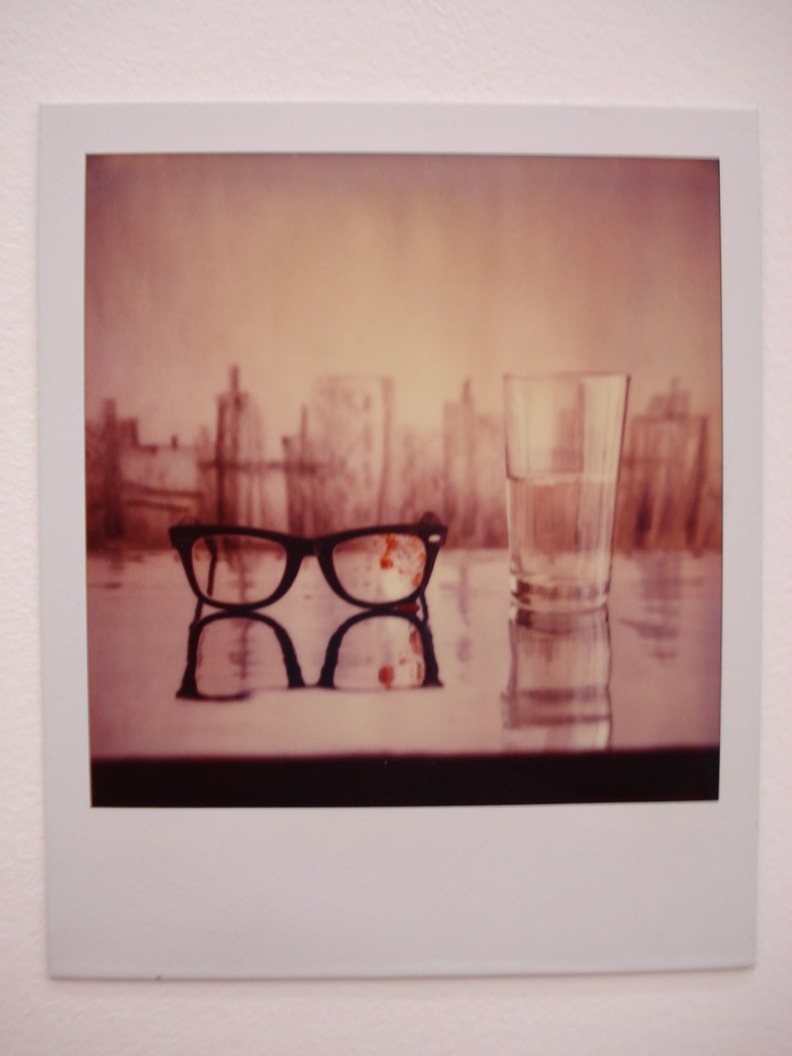
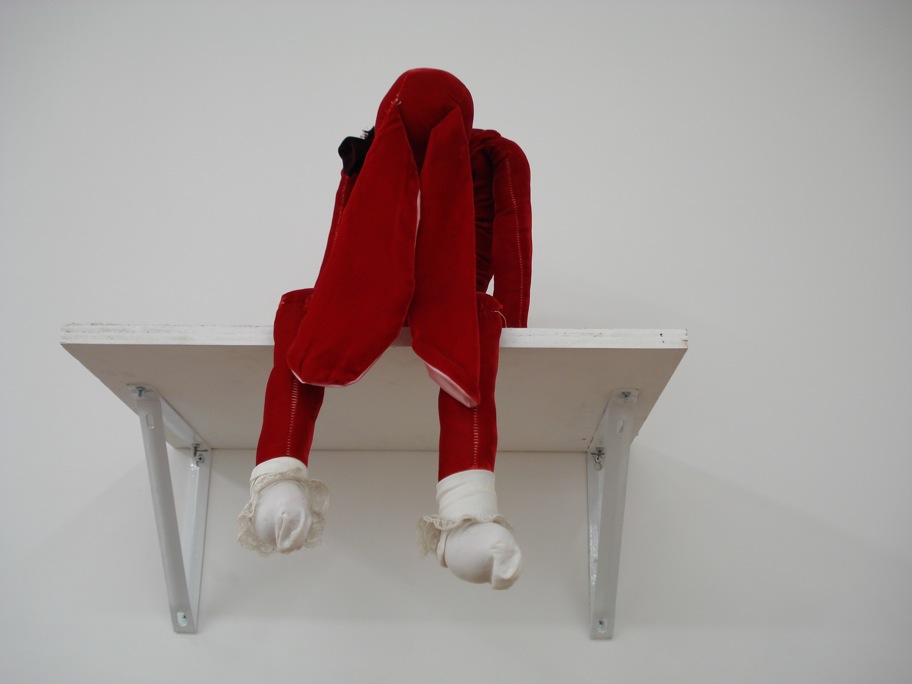
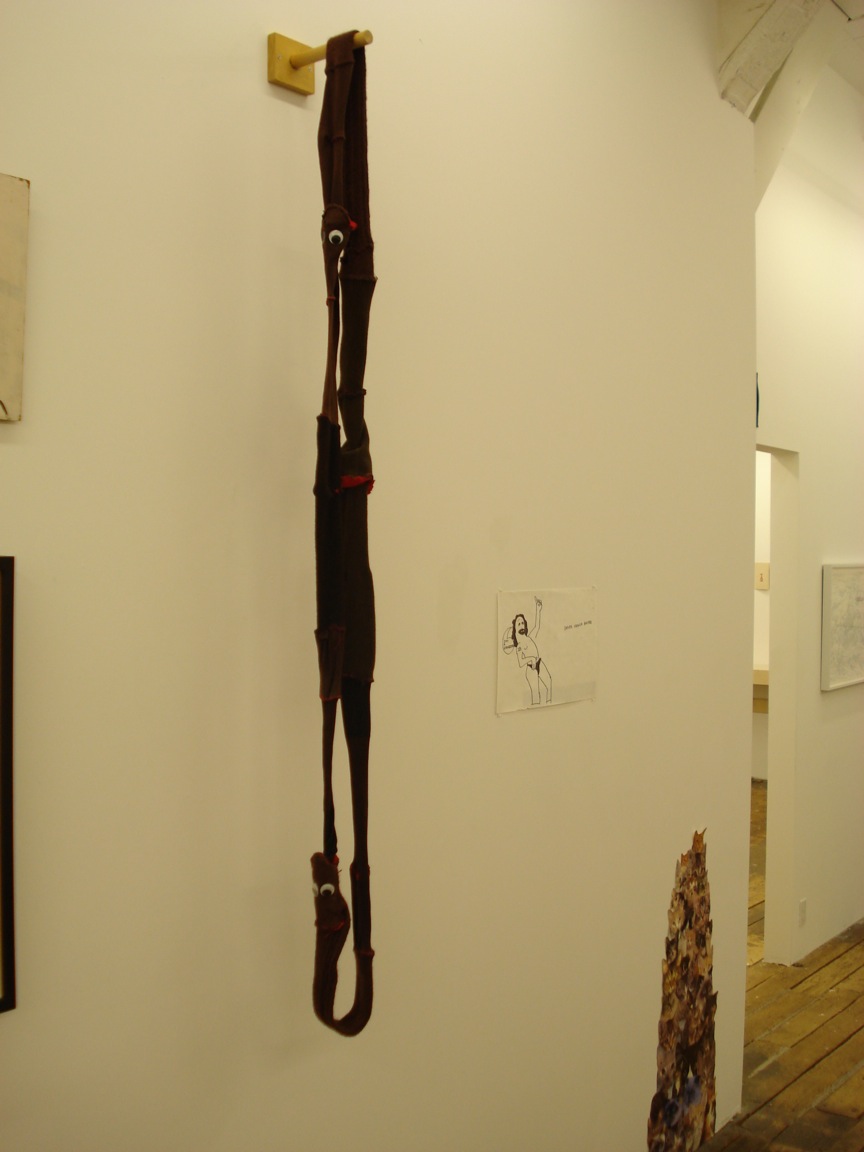

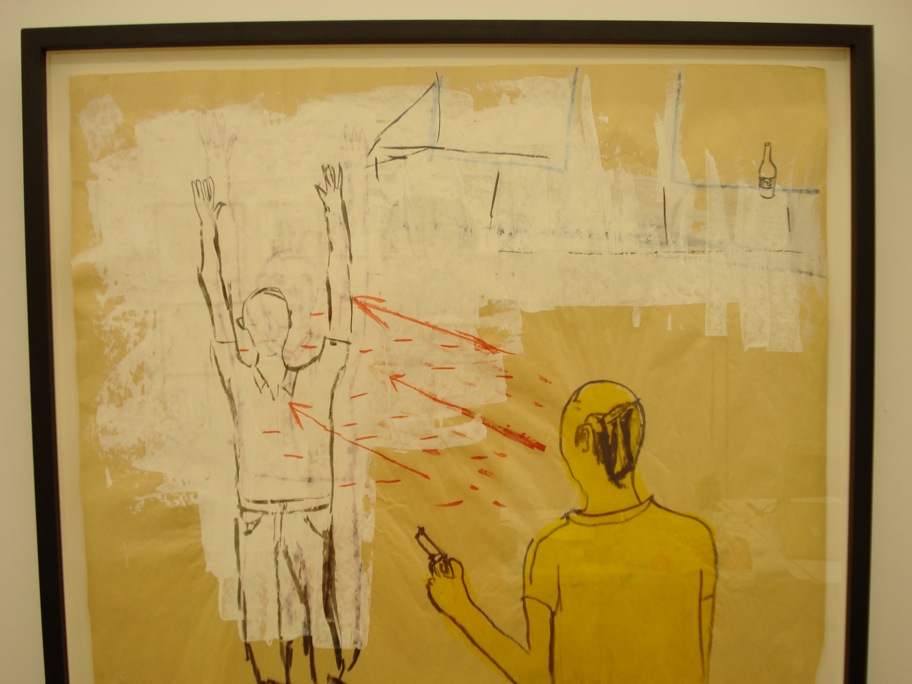
—-The projects got more and more focused, and the crowds swelled, but underneath it all Rick was feeling the strain. There was never any money and, for such a tiny space (someone compared it to a single lane at the world’s smallest bowling alley), the rent was crazy steep–$1,300, $1,400 a month, something like that. Rick operated Kiki as a Ponzi scheme in which artists who had sold work might be paid, would usually be paid, but not always in money. He persuaded Vince Fecteau to take it out in work by another artist, Jim Winters. “Back then I needed money more than I needed a painting by Jim Winters,” Vince said, “but that’s what I wound up with.” The last show was a tribute to Yoko Ono, organized by Rick and Wayne Smith. It was rather on the grand side—by Kiki standards—and it was only a tribute when seen from afar, for several of the artists, and quite a few of the contributors to the catalogue, expressed decidedly mixed feelings. The catalogue was called “This Is Not Her.” Yoko herself called up to murmur about how pleased she was—it was a sign of Kiki’s ineptness as a gallery that when Sean Lennon called to thank Rick for organizing this show to honor his mom, no one was answering the phone, but happily the answering machine tape was preserved, and then later, when Yoko called, her message was on the same tape. You can hear her issue a challenge to Rick, by saying, “This is her. Yoko!” That cheerful lilt. But how would he know for sure it was she? “The proof is in the pudding,” she philosophized, then like a mad etymologist asked rhetorically — what pudding? “I’m flabbergasted, delighted, and honored.” Finally she emitted a trademark scream — half warble, half death cry, left a few giggles, and hung up. (You can hear that tape in the Kiki retrospective, it plays every five minutes or so, spooking gallery goers considerably.) On the closing night Cliff Hengst and Rex Ray took to the streets and we gathered around while the two of them recreated some of Yoko’s spectacular screaming numbers from the Live Peace in Toronto era, Rex on electric guitar with the furriest feedback you’ve ever heard, Cliff playing Yoko relatively straight and with great dignity. (It was a cover of the 26 minute freakout “Cambridge 69,” from the Life with the Lions LP.) Within ninety seconds of the performance the neighbors were out on the street and within ten minutes the cops were out in full force, asking for Rick’s business license. The night was cold (it was February, 1995) and dark and filled with crazy people.
—-When Rick closed Kiki, it was abrupt and final. When the last show went down, the Bearded Lady next door expanded operations and took over both spaces, and then Kiki turned into Black and Blue Women’s Tattoo Parlor. Wayne and I wrote a great part for Rick in our play, Diamonds and Rust, and he did OK in rehearsal, but couldn’t make it to the performance (September 1995). That was when I realized how far things had gone. The protease inhibitors that were newly on the market might have saved his life, but it was too late. Rick went home to his family in Wisconsin, and died there a bit later. Again I link back to Auden:
When there are so many we shall have to mourn,
When grief has been made so public, and exposed
——-To the critique of a whole epoch,
The frailty of our conscience and anguish,
Of whom shall we speak? For every day they die
Among us, those who were doing us some good,
——-Who knew it was never enough but
Hoped to improve a little by living.
—-In my own book of poetry, Argento Series, I pictured Rick’s body in some Wisconsin glade, like the forests the young Hemingway evoked in the Nick Adams stories. And mixed in with this image, of Rick being tended to by deer and forest creatures, I recalled a strange memory, of another exhibition, at San Francisco’s Rena Bransten Gallery, in which Brett Reichman was showing his work, and at the opening Rick introduced me to the cult film star Udo Kier, then very famous from his sinister parts in My Own Private Idaho and in the video for Madonna’s “Deeper and Deeper.”
The boy, dead on the forest floor:
rough tongue of deer licking his face, salty as sugar.
Spindly legs of deer, spindly as origami:
his body, wasted and angry in death.
Who is that boy, Rick Jacobsen, why do I see his face
lying still, pale, in the forest glade?
Overhead a bland ceiling of green leaves, sun poking through
Onto the glade of black, gritty dirt, pine smell.
“Rick Jacobsen, this is Udo Kier.”
Rick Jacobsen, his red hair stained with sap and mousse.
Deer stand on spindly legs counting his freckles,
His corpse found awkward in baggy ACT UP style shorts, big shoes,
unlaced:
rich clothes fit over angry thin body,
human body now food for a forest of foragers.
Big owl in treetop high, hoots out his name, “Red boy,”
signaling four-legged predators. Red in tooth and
claw-footed they stagger like walking tables;
in silence they approach, not to honor the dead
but to shorten the world, thumping the floor
at midnight, so that by daybreak,
Jesus, you see all these deer licking his face.
Tongues pry open his pale eyelids slightly:
Rick’s blue eyes blank but filled with green sun, forest light
where Ernest Hemingway prowled these big woods
where I introduced Rick to Udo Kier
giggle
the mad giggle of Udo Kier trying to speak English at a party
at Brett Reichman’s opening at Rena Bransten gallery
and he signed my autograph book
he wrote that he loved me
Up in country outside of Wisconsin
with a big dog, the body heaves
tumbled aside by bear and game, outside of law.
His dirty face, now clean and wet, now streaked with mud;
his eyes and mouth jewels on the floor of the forest,
till, barrel first, a gun pokes between the trees
Udo’s not so bad, not a bad shot
like masters, the deer go down, one by one
like falling trees down go the deer
If I did love thee in my master’s stead
with such a gamy grin, my lips pulled back in rictus,
I would not understand it,
in my denial thou would see no sense
* The website of the exhibition has some good general installation shots.
* Also one of the artists, Karla Milosevich, took a lot of pictures of the opening, and the dinner afterwards.
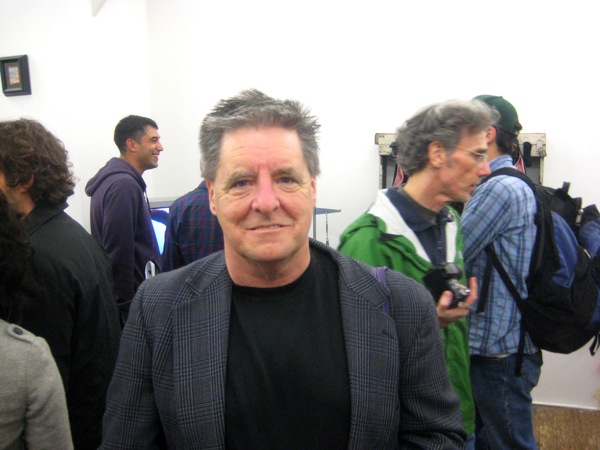
—-
*
p.s. Hey. ** David Ehrenstein, Hi. Yes, very interesting, strange “career”, from John Huston to David Lynch, not bad. ** Kayton, Oh, man, taste is taste, but you’re missing out, man. I never read in the metro. I just look at people. And in France, they let you, they don’t mind. I think Freddie Krueger is coming back, but you just know they’re going to castrate the shit out of him. Zac’s and my next film, which is about a walk-through haunted house, has a ghost. A crazy one. But no sex. Well, hints. ** _Black_Acrylic, Hi, Ben. I, of course, intend to see the Francis Bacon show. I’ll let you know the deal once I have. ** cal, Hi, Cal. Great to see you! You good? What’s up and going on? Thanks a lot about the posts. I do my best. ** Steve Erickson, I haven’t seen the last couple of Dardennes, but the critical response to them here hasn’t been so different from yours. The Cannes recognition of the new one bewildered almost everyone. Curious, as I think I said, if ‘Zombi Child’ somehow plays better in the States than it did here. It was quite a bomb in France. Best of luck with the optometrist. ** Misanthrope, Well, thank you, sir. I think it depends re: the self-publishing. I think maybe if your orientation revolves around thinking the major presses are books’ biggest legitimising force like in the good old days and indie presses are like the major presses’ eager beavers younger siblings then self-publishing might still seem like a loser’s game, but among my … crowd, comradres, or whatever, self-publishing is completely accepted as another way to get the work out. But, yeah, if you’re hanging with people who think the quality of the writing is beside the point, that’s a world I don’t know and isn’t a world that my world has any relationship to, which is fine, the way of the world. Wow, she’s 25? That’s wild. Only three weeks ’til you hit the UK, nice. Next time you go, you might need a visa. I’m supposed to go over there to do a gig in November, but it’s kind of a wait and see as to whether I’ll be able to just pop over there or not. You already know that I highly, highly highly recommend Japan. ** Right. Today I give you the third of the four guest-posts that were made for this blog by the late and very great Kevin Killian. This one is a lively thing about the short lived but very influential and original SF gallery Kiki. Enjoy. See you tomorrow.




 Now available in North America
Now available in North America 
I’ve been to several walk-through Haunted Houses. One was in a classroom, one was in the basement of a church, one was at Virginia Beach, and another was constructed inside an art gallery. And then there was this really strange Haunted/Funhouse thing in the Dells. This one spoiled me. I wonder what my favorite metro stop is? Yours? I like waiting on the train. A good time to get a look at them thangs. I will conquer France one of these days! I’ve yet to sleep with Parisian boy. Ol’ Fred’s a nasty one. Hard to castrate him really, he’s ahead of the game. Child killer in that vein takes the cake. I’m really into ghosts. It took me years to realize I see them all the time. You’re really good at ghosts. I’ve had to put a couple of your books under the bed before. A lot of ghosts are crazy. A crazy ghost is fun, it’s like Pascal, or the crazy-eyed mogwai, or a Goblin. My sex life is so crazy. I want this one boy over and over, but I really want this other boy or a boy like him.
Nice jaunt down Memory Lane today.
Desperately Tweaking Susan
Great to see this restoration, Dennis. A sombre and nostalgic day. I remember the Ratio 3 show well.
By chance I just finished:
https://www.goodreads.com/book/show/45486181-nayland-blake-justin-vivian-bond-in-conversation-on-jerome-caja
The link for the exhibition website doesn’t work anymore. But looks like this is the new location:
https://ratio3.org/exhibitions/kiki-the-proof-is-in-the-pudding
Looks like Karla Milosevich’s album of the Kiki photos has also moved.
Bill
Thanks for this, Dennis. It’s beautiful. Kevin was always so kind and supportive of me. I’m so grateful to him and Dodie. I’m enjoying spending time with this post today and thinking of him. B
Some major theme park news today, as Flamingo Land have now withdrawn their bid to set up a development around the woods of Loch Lomond. There was a Scottish Green Party petition set up that lodged some 56000 objections from members of the public, making it “the most unpopular planning application in Scottish history.” A good day for anyone who cares about this country’s environment, I think.
Hi! I’ll be in Paris for the first time next week. Wondering if you’d recommend anything and/or if you know of anything going on (would love to see ‘Crowd’, but it’s currently sold out). Feel free to email.
ZOMBI CHILD may well be do better in the US, at least with critics. My reaction was “this is enjoyable, but I don’t really know what it’s aiming at.” Given the number of topical subjects it flirts with, that feels more productive than evasive (while YOUNG AHMED practically comes across like an Afterschool Special.)
I learned that I’m in the very early stages of developing cataracts, although I won’t need surgery for years. The doctor gave me a new prescription for glasses lenses, which I will try to get filled tomorrow.
Hello Dennis.
Thanks for the support on the new SCAB issue. It’s cool and flattering to see my name next to a bunch of great writers in your post. This reminds me I need to respond to Dom’s email. I’m particularly lazy about that stuff. Or busy with other stuff. Both perhaps.
Things over here are good. Staying low to the ground, not going out much, writing when I feel like. I had a new story thrown up on Holler Present’s blog. I think that’s going to be my main hub right now, I don’t have the energy right now to be sending stuff to different places, but that’ll change. For now it’s cool to see my stuff in a single place, and it’s being read by Scott McClanahan which is good nuff for me. Here’s the link if you’re curious: https://hollerpresents.tumblr.com/post/187651974744/my-axe-is-my-buddy
Besides all the homework I got I’m inching my way through Wurlitzer’s ‘Drop Edge of Yonder’. Fantastic book. The epigraph is a line from a zen text, going to dive into that once I’m done. Then not sure. Oh I’m watching Ken Burns’ new ‘Country Music’ doc. It’s pretty good. If you’re curious it’d be worth checking out. Oh man did you listen to the new Yves Tumor? So good. I’ve been going between that and gearing up for the new Richard Dawson album.
This weekend will be about rest. I’m sleeping a lot but not in a way that’s productive to my schedule. Going to see James Gray’s newest ‘Ad Astra’ for sure. I haven’t looked too much into it. I wanna go in as blind as possible. A new James Gray is good enough for me.
Still looking at the book. Making slight changes here and there. Curious what you’ll think. Honestly it’s had so many lives I don’t even know what to think about it. There’s a poem in there that borrows from the title of your book ‘The Tenderness of Wolves’. Hope you don’t mind.
Alright signing off. I need grocercies bad, and better do that now while I got the energy. Hope alls well with you. Hope your reader’s reading your newest. Still vegan? Do you feel any different? I never do the transition right and am always energy depleted. One day somebody’s gonna have to teach me how to eat. One day.
Alright take it easy. Chiou.
Hey dennis
Gonna comb thru this post finely tonight.
Havent been up to much working that’s about it. Started a writing workshop with a few friends but it’s in a weird place rn were we keep pushing back the date for when to read and chat and stuff so who knows if it’ll keep going.
Just saw Border (2018), good movie, based off a Lindqvist short. Have you read his stuff?
I’m Rick’s mother. Raising Rick was an adventure. We loved him dearly. This blog captured the spirit and personality of Rick so well. It brought joy, pride and tears to my heart.